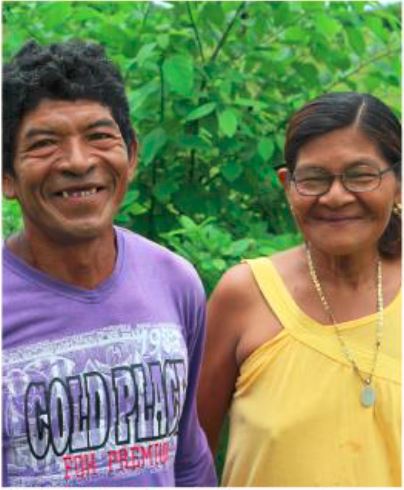
Omar Teran and his family had already invested four years of sweat into land preparation, built a house, and survived armed militia shootouts in the hills of northern Colombia. That was in 2009, and the most violent period of the conflict was behind them. He and 35 people from his extended family—all from the Zenú indigenous community—living on the nine-hectare parcel saw a peaceful and prosperous future.There was only one problem: the land did not belong to Omar, and the owner wanted it back.
Omar’s story is nothing new in Colombia, where the 50-plus years of conflict displaced over six million people. In the desperate shuffle, thousands of families ended up settling on lands owned or claimed by others. Today. the country’s Land Restitution Unit, an institution mandated to represent displaced land owners and deliver restitution to victims, is helping local authorities sort out the situation.
Until recently, the government had not taken stock of the situation of “secondary occupants”—good-faith occupants of land being claimed by others—and restitution rulings have lacked sustainable solutions for victims like Omar. The challenges run even deeper: most such occupants are not aware of their land rights, and families like Omar’s never had a public defender to support their case.
“I searched for the owners in 2004. Back then, neighbors told us that the land was worth what was planted on it,” says Omar. “It would be hard to leave this now. It hurts to think of losing all the life we have created.”
Twelve years later, Omar and his family turned nine hectares of land wedged between two hillsides into a productive farm providing the family with yucca, maize, and tropical fruit. Omar has planted over 50 fruit trees, from mango to avocado and carries forth the Zenú weaving tradition. His family grows caña de fleche, the raw material used to make Colombia’s famous cowboy hat.
Land restitution is a fundamental part of Colombia’s current peace deal, which spells out the government’s duty to provide integrated rural reform. The government estimates that over 160,000 people are still in need of land restitution, a tall order for an institution that has processed 23,000 cases in the last five years. The USAID-funded Land and Rural Development Program (LRDP) is supporting the government with strengthening it’s institutional framwork—the foundation of effective land governance—to implement the peace accords. Guided by the government, LRDP focuses on priority areas with high concentrations of vulnerable groups such as indigenous communities and secondary occupants.
Public Defenders
Legal assistance for secondary occupants is one aspect of the program’s comprehensive approach to improving the quality of legal assistance to improve the quality of legal assistance provided to restitution cases. In 2015, through LRDP support, public defender Carlos Beltrán visited Omar’s parcel to offer his family legal assistance and defend their case during the restitution proceedings.
Beltrán was hired as a public defender in Sucre Department in 2014 and has over 100 secondary occupant cases on his plate. Omar and his family provided him with a power of attorney and the background on the family’s arrival to the parcel. The case—which is complicated by the fact that the land is supporting so many famlies—is currently in the evidentiary phase and is expected to go in front of a judge this year.
There are over 1,600 secondary occupants living in LRDP’s five target regions, many of whom are entwined in complex legal cases but cannot afford the legal representation they need. LRDP has trained and supported some 250 public defenders and reached more than 800 secondary occupants.
“These victims are always saying to me: the land is of those who work it,” Beltrán explains. “There is a lot of desperation and for many of our clients, the public defender is their final hope.”

